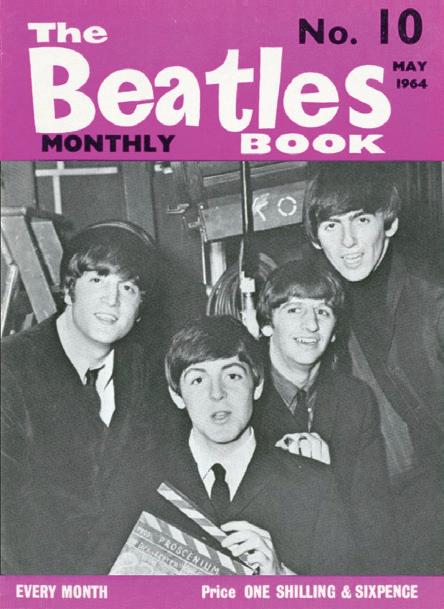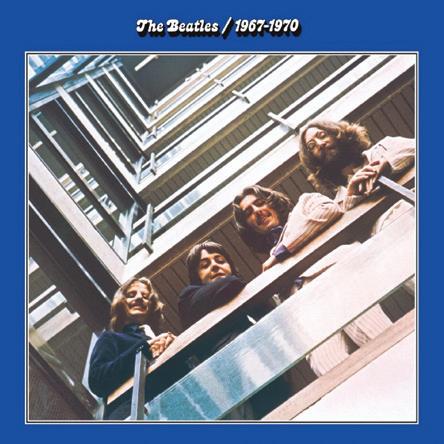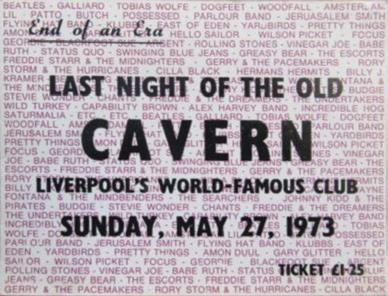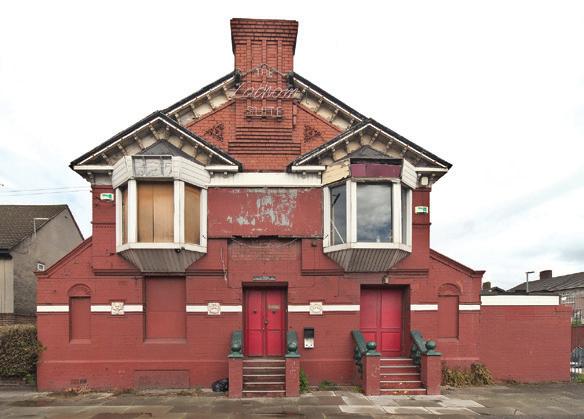
5 minute read
Standing
Julia Sanina is a Ukrainian singer, composer and frontwoman of award-winning rock band The HARDKISS. Alongside Alesha Dixon and Hannah Waddingham, she will host the Eurovision Song Contest Grand Final to a global TV audience of 160 million people. Julia discusses the responsibility she feels as Ukraine’s sole on-stage presenter and how she hopes Eurovision will help refocus minds on her nation’s plight words lawrence saunders
Have you felt welcomed by the people of Liverpool since you arrived in the city?
Advertisement
I love Liverpool! It’s such a beautiful city with friendly people. I’ve seen so many Ukrainian flags and Ukrainian colours all over the city centre. I’ve also visited the beautiful Liverpool Cathedral and a place where Ukrainians and Liverpool citizens can pray for Ukraine. It was so heartwarming for me. I think Liverpool is a wonderful place to have Eurovision.
How important is it that Ukraine, and the situation in the country, is properly recognised and highlighted during Eurovision?
For me, it’s super important. I think that all Ukrainians feel support from the whole civilised world.
Unfortunately, it’s still too unsafe in Kyiv for us to host Eurovision and we all understand that. We are so grateful that the UK is hosting on behalf of Ukraine and I see a mix and synergy of two different cultures. There will be a lot of Ukraine in this Eurovision – lots of Ukrainian performances and performers. I’ve seen a lot of Ukrainians working here backstage at Eurovision as well.
This attention on Ukraine is very important. It’s important that people are talking about Ukraine, that people are seeing Ukrainian culture, Ukrainian colours, the Ukrainian pysanky eggs on display in Liverpool ONE and even The Beatles statues at Pier Head wearing Ukrainian vyshyvanka (traditional embroidered shirts). Everything means a lot to us. We are still fighting. The war is not over. We don’t know when we will have that victory and we need your support.
Do you feel any pressure as Ukraine’s sole presenter on stage at this year’s Eurovision?
Not pressure but certainly a sense of responsibility because I will be the only Ukrainian host on the stage. I know that Ukrainians will definitely watch Eurovision this year because they are all waiting to hear Ukrainian songs and to see something from Ukraine. Of course, all [Ukrainians] are behind me and I feel that huge support. The whole nation is standing with me and I know that I am responsible for doing my job perfectly so I can make them proud. I’m preparing some wonderful outfits created by Ukrainian designers and lots of surprise moments!
Given the situation in Ukraine, will many people in the country be tuning in for Eurovision?
Eurovision in Ukraine is always huge. We love this show very much. We always see the Eurovision stage as a big international platform where we can display our culture and show that we are different from Russia. We are not part of Russia – we have our own culture and our own language. Before this full invasion, many people only knew that Ukraine was a country near Russia and about Chernobyl and the Klitschko brothers. Unfortunately, the price has been too high, but now we can be seen and heard by the whole world. This is why I think Ukrainians will definitely watch Eurovision this year. Ukraine is still under attack, especially the south of the country. The largest military attack seen since World War Two is going on right now in the centre of Europe but even in the bomb shelters we have the internet and I think people will need that couple of hours of joy and celebration of Ukrainian culture. I think they will be proud of what we, together with the UK, will do on the stage.
Are you excited to be performing with your band The HARDKISS during the semi-final?

Yes, of course! We will sing our song ‘Маяк’, which means ‘lighthouse’ in English. This will be mixed with a very popular British song which I can’t name now because it’s a secret! But the main ideas behind both songs are the same. It’s about unification, support, sisterhood, brotherhood, and love, and the idea that hand in hand, we have to stay together. The whole idea of Eurovision in the first place was unification after World War Two – the organisers wanted people to come together and support each other. This year’s Eurovision, like last year’s event, is about much more than just entertainment.
Are you hoping Liverpool hosting Eurovision on behalf of Ukraine will help put more focus on the plight of your country? Especially given the war has now been ongoing for more than a year.
Of course. A year is a huge period of time and unfortunately, people forget [what is happening in Ukraine]. It’s just how psychology works. We try to forget some things and put them back and away [in our minds].
But we need to understand that Ukraine is fighting not only for its own territories, but for international law, justice and the European idea. We hope that people will not forget what we are going through right now and that they will stand with us in the future.
The Grand Final of Eurovision 2023 will be broadcast on BBC One on Saturday 13 May

His Ory
words and pictures

On Tuesday, 10 May 1960, The Silver Beetles auditioned alongside other local bands for the chance to back Liverpool singer Billy Fury on a summer ‘Idols on Parade’ tour. The Silver Beetles were unsuccessful, but as the second-best band, they were offered the chance to support singer Johnny Gentle on a tour of Scotland instead.

The first night of Gentle’s tour started on 20 May at Alloa Town Hall with The Silver Beetles as his backing band. The group adopted aliases for the duration of the tour; Long John (John Lennon), Paul Ramon (Paul McCartney), Carl Harrison (George Harrison), Stuart de Staël (Stuart Sutcliffe), while drummer Tommy Moore became... Thomas Moore.

At the beginning of May 1966, the band now known as simply ‘The Beatles’, gave their last ever scheduled live performance in the UK at the New Musical Express Annual Poll-Winners’ All-Star Concert in Wembley, London.



Sadly for Beatles’ fans, the band’s 15-minute set wasn’t filmed as terms hadn’t been agreed upon with the respective managers of The Beatles and The Rolling Stones for their artists to be shown on television. Fortunately, footage does at least exist of The Beatles receiving their poll awards.
Later that May, John’s iconic Rolls Royce was delivered to his sixbedroom mansion in Weybridge, Surrey. It wouldn’t be long before the psychedelic motor got him into trouble, however. Chased by autograph hunters in Middlesex, John was pulled over by the police and fined for speeding. Once the coppers had finished booking the famous Beatle, the chasers finally managed to secure their precious ink.
In May 1969, seven years after the release of Please Please Me, The Beatles regrouped with photographer Angus McBean at EMI House to shoot the cover image for their next album. The famous snap, taken at the same location as their debut LP, was shelved –eventually reappearing on the cover of their 1967-1970 ‘Blue Album’ compilation. The picture showed how much The Beatles’ image had changed since the beginning of the 60s – to think in 1963 they were accused of having long hair!

The Beatles’ final album, released in May 1970, was for all intents and purposes the soundtrack to their fifth and final film Let It Be Recorded with a back-to-basics ethos the album became the only Beatles’ full-length release issued exclusively in stereo.



Taking us right up to the present day, and only a short distance from the site of the original Cavern Club, Beatles’ fans now have the chance to view previously unseen stage set designs created by Paul McCartney in 1966.


The personally annotated sketches recently went on display for the first time before an invited audience at the Liverpool Beatles Museum. Beatles’ manager Brian Epstein invited Paul to design the stage backdrops to promote plays and rock concerts at The Saville Theatre, which he leased in 1965. Paul drew 12 intriguing designs which he thought would cater for a variety of entertainers. Design number eight was chosen for the backdrop of the Four Tops’ only UK appearance in 1966. All 12 designs will remain on display at the Mathew Street museum for the foreseeable future.










